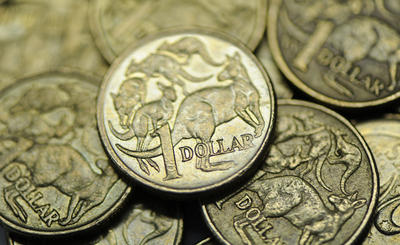Yet this newfound resilience should not be taken to mean that the Australian dollar qualifies as a safe haven. Australia is running simultaneous current account and budget deficits. The dollar does not benefit on net from ‘home bias’ repatriation flows when things go awry because the country has a large stock of international liabilities. To say that the Australian dollar is ‘resilient’ is to say that it falls at a slower pace than it used to under comparable circumstances. By contrast, a safe haven currency tends to appreciate in times of trouble. And while the Australian dollar has become much more attractive as a minor league reserve currency, that is not the same as being a safe haven.
It is well known that Australian commonwealth and state government bonds have recently become much more attractive to foreign exchange reserve managers. At a time when ‘risk free’ assets are increasingly scarce, the genuine AAA status of Australia’s commonwealth sovereign and its state counterparts make it a natural destination for long-run investors who prioritise liquidity and capital preservation.
The less well publicised aspect of the Australian dollar’s newfound resilience is the improvement in the aggregate mix of external financing that the Australian economy now attracts. This diversity, combined with the substantial narrowing of Australia’s net external financing needs via an improved trade position, has also contributed to the dollar’s resilience.
In the pre-2008 world, Australia’s current account financing task was essentially shouldered by its financial system. Today, the gap between Australia’s own savings and its investment needs is smaller and the financial system is joined in sourcing international capital by the commonwealth, the state governments and the corporate sector.
Australia has come through a period where genuine AAA issuers (the majority of the public sector and banks with covered bonds to sell) have increased their call on international investors. At the same time, AA rated financials have reduced their relative demands and have replaced short-term and securitised funding with longer-term bonds, while the non-financial sector has been sourcing a great deal of ‘sticky’ direct equity capital. Higher quality external financing and more resilient capital flows has resulted from these trends.
As a result, the size of the external financing requirement has narrowed. The current account deficit (CAD) was reduced from 6 per cent of GDP in December 2009 to just 1.7 per cent in September 2011. The 4.3 percentage point improvement in the CAD can be broken down into a 0.6 percentage point decline in the investment share of GDP and a 3.7 percentage point improvement in the savings share. The latter shift was associated with a sharp rise in national income via the terms of trade — a rising proportion of which was squirrelled away by both households and corporations. So despite a rapid rise in the public sector’s borrowing requirement, the national net savings position improved enormously.
Looking ahead, some of the factors that have done much to improve the Australian economy’s external financial resilience are expected to be less favourable. First of all, the CAD has begun to widen again. The recent weakness of commodity prices, combined with a steep increase in demand for imported capital goods, has seen the goods balance swing back into deficit. This reflects the fact that the gross savings share has levelled out while the investment share is again on the rise. The mining boom is more than fully offsetting caution in the rest of the corporate sector and the slowdown in public investment, so more foreign capital will be required and the public sector will be doing less of the work. These trends do not predict a full return to the ‘old days’ because the mining boom is funded by a mix of direct and portfolio liabilities. Still, equity liabilities tend to pay a higher long-run rate of return than debt, so the prospective funding mix will likely widen the income portion of the CAD in future phases.
Some elements of the improvement in Australia’s external financing position are cyclical, and Australia’s current account financing dynamics have already begun to shift back toward historical norms. Other factors are more permanent, so it is extremely unlikely that the situation will go all the way back. The shifting balance of these forces will reduce the currency’s present level of resilience during times of stress. That is no bad thing. The flexible exchange rate is a key pillar of Australia’s counter-cyclical response mechanism. At times it needs to depreciate swiftly to play its part effectively. A situation that prevents depreciation when cyclical fundamentals are in decline is potentially damaging. The resultant financial conditions would be overly tight. A ‘recalcitrant’ nominal exchange rate pushes the burden of boosting competitiveness — real exchange rate depreciation — onto domestic prices. And that sort of adjustment is never pleasant.
Huw McKay is Executive Director and Senior International Economist at the Westpac Bank and a doctoral candidate at the Australian National University.

